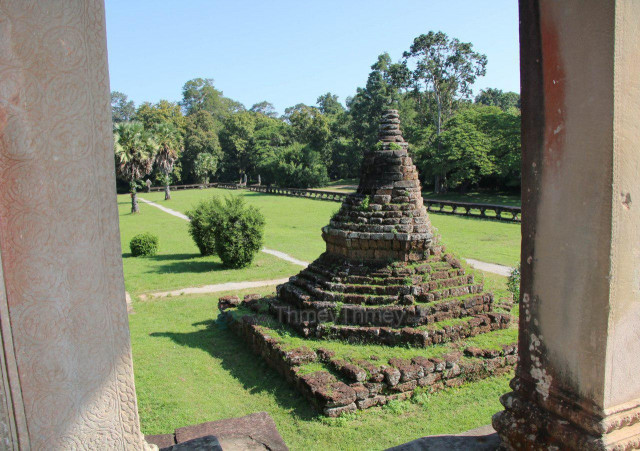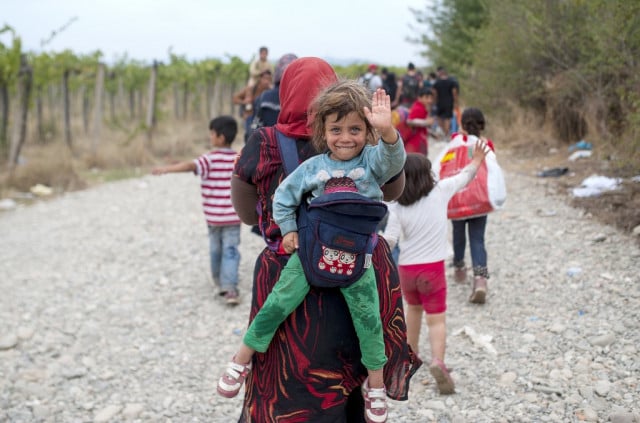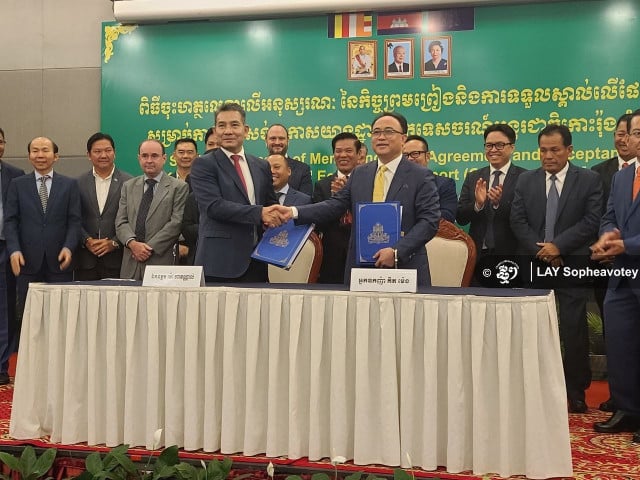The Story of the Chey Non Stupa at Angkor

- By Isa Rohany
- February 5, 2023 2:00 PM
SIEM REAP - With its vast grounds spreading over 1.5-by-1.3 kilometer and its thousands of sculptures, scenes and elements on walls and columns depicting Hindu deities and mythology, the temple of Angkor Wat is an immense monument to explore. A museum, an archive, an art gallery, a pagoda and possibly first meant as a tomb, walking its grounds from west to east can take some time and be a rather long walk as the temple’s site is enormous.
Those who reach the eastern entrance will come across a peculiar structure in the shape of a cone standing in a quiet setting under the trees filled with chirping birds. Then, you may hear the footsteps of other visitors who are also exploring the back of the temple, wondering what may be there.
_1675576918.png)
This unusual and obviously non-Angkorian structure has made many people wonder as to when and why it was built. The answer was eventually found in an inscription written as a poem on the stone wall of the temple. According to the text, the story behind it goes back to 1701. By then, Angkor had not been the capital of Cambodia for a few centuries but, as historians have mentioned, its temples were still important to the country.
Chey Non, or Jaiya Nan, was a high-ranking government official at the Royal Palace in Udong—Cambodia’s capital from the 1700s until 1865 when Phnom Penh became the capital. He was in unbearable pain following the death of his wife and children. Looking for a special place to leave their remains, he built this structure as a stupa to house them. What prompted the death of Chey Non’s family remains unknown.
_1675576753.png)
The poem that tells the story of this structure still standing in the middle entrance of Angkor Wat on its eastern side has been labelled by researchers IMA-38, that is, Inscription Modern Angkor Wat 38. In the course of the centuries, some mortar gradually fell off the stupa’s laterite stones. However, one family in Siem Reap province has kept on taking care of this stupa, and continues to maintain it and to hold ceremonies in accordance with tradition.
Even though Angkor stopped being the country’s capital in the 1430s, Cambodian dignitaries as well as ordinary people continued to visit Angkor consistently at least until the mid-18th century with the Angkor Wat temple being an important Buddhist pilgrimage center as was confirmed by inscriptions of the era. Some of those inscriptions tell stories of people’s good deeds, ceremonial activities and pledges.
As researchers have come to conclude, Angkor Wat was built not only as a Hindu temple but also as a tomb, which is why the temple faces west, during the reign of King Suryavarman II in the early 12th century. Even today, some Cambodians want to have the remains of their relatives who passed away cremated or buried at Angkor Wat as Chey Non did.
_1675576976.png)
“In the early 2000s, when I was working at Angkor Wat to restore the blocked waterways, I found a lot of bones,” said Ea Darith, deputy director of the Department of Conservation of the Monuments Outside Angkor Park for APSARA Authority that manages Angkor Park. “The bones were buried without protection or with protection such as inside potteries.”
Some Cambodians today will wish to have the remains of their loved ones close to those of important individuals. For example, when a senior monk of a pagoda passes away, people in the community will want, if this is possible, to cremate their family members who died cremated alongside the senior monk’s remains as this is considered a blessing.
Originally written in Khmer for ThmeyThmey, this story was translated by Ky Chamna for Cambodianess.















